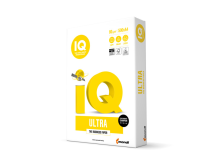ThermoFlexX Woodpecker surface microstructures are applied at the imaging stage and are adaptable solutions that work with open RIPs. Furthermore, as the pattern is not embedded in the file, which normally increases its size greatly, much faster data exchange and computer processing times can be achieved. This significant reduction in workflow complexity also improves plate delivery times and ultimately speed to market for brand owners.
The new version enables higher imaging speeds of flat top dot flexographic plates for standard white inks. As a simple, open and effective screening solution, Woodpecker Nevis has the potential to save on costly white ink while providing more contrast and improved colours in flexible packaging printing. Already commercially available, it is the latest addition to the Woodpecker portfolio, which also includes the Sharp, Nano and Replay options for ThermoFlexX TFxX plate imagers.
‘Woodpecker Nevis screening improves overall brilliance and makes it possible to save on white ink costs while also simplifying and speeding up the imaging process,’ said Christophe Lievens, Global Sales Director XSYS Prepress. ‘In combination with the ThermoFlexX Multiplate option, which allows multiple resolutions to be imaged on the same plate, it delivers a more cost-effective and competitive solution that will help printers optimise OEE and reduce waste.’
The objective of the Woodpecker surface screening solution is to control the ink more accurately, as it is transferred from the anilox to the plate and onto the substrate. The result is a smoother, higher opacity ink laydown, sharper line work and cleaner screens, without any of the common printing defects often found in flexo printing, such as pin holing, trail edge voids and halo effects, at full press speed.
Developed to work seamlessly with the higher volume anilox rollers usually used for printing with standard white ink on film-based substrates in flexible packaging, Woodpecker Nevis consists of three surface patterns with different levels of coarseness for the broadest application reach. While a higher volume anilox will increase quality and opacity, there is also the option to decrease the anilox volume which may consume less expensive white ink without negatively impacting the opacity.
‘Good coverage of white is essential in flexible packaging printing where it provides the foundation for strong colours and impactful graphics. However, white ink can represent as much as 50% of the total ink costs, so XSYS continues to develop new products that can help optimise the process, lower costs, and take out more waste. With Woodpecker Nevis, we are bringing to market a flexible and sustainable solution that can be adapted to each customer’s individual needs,’ concluded Stephan Reis, Global Marketing Director. ‘We now offer high frequency surface screens for process colours and white, thereby covering the whole spectrum.’





















